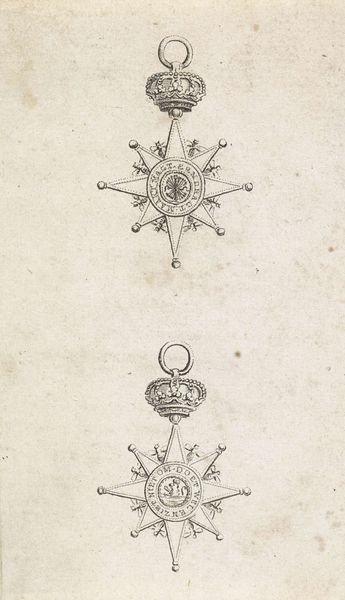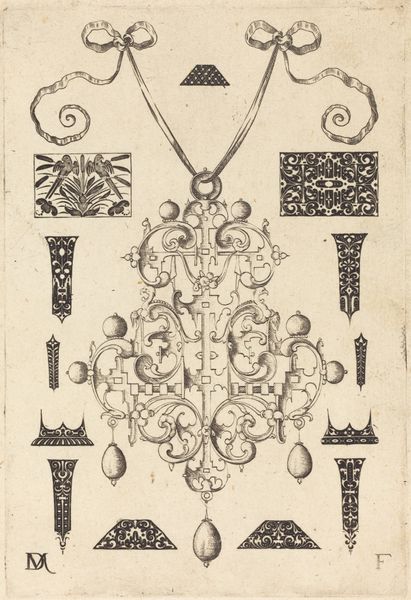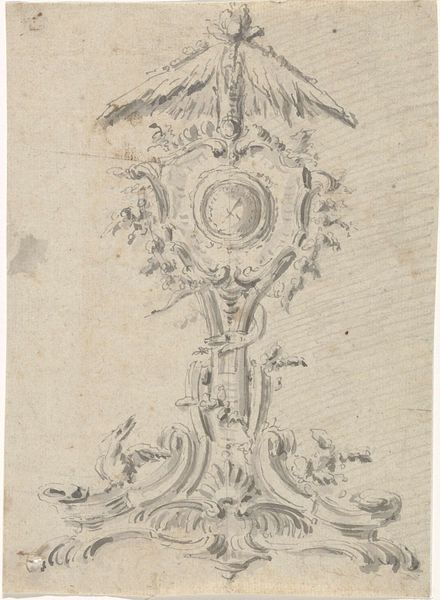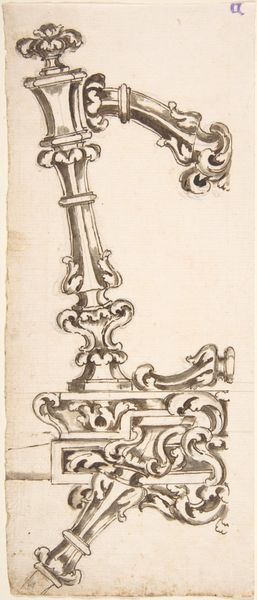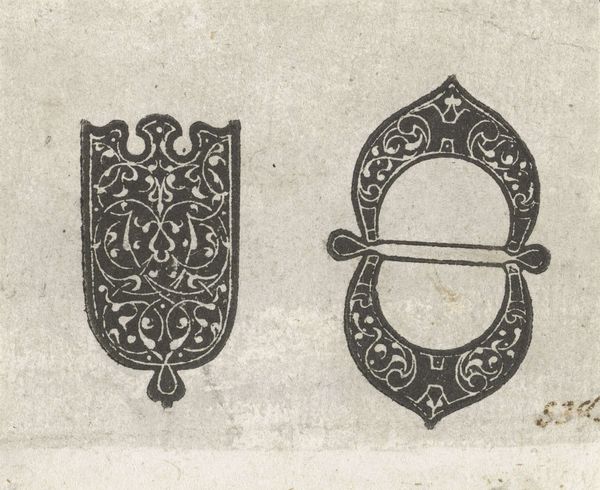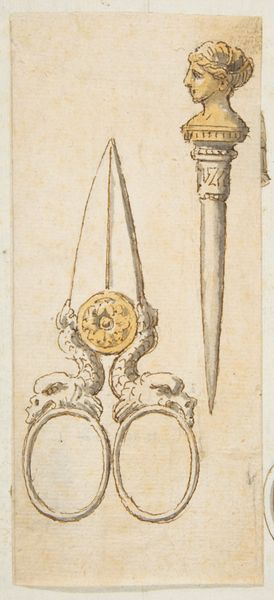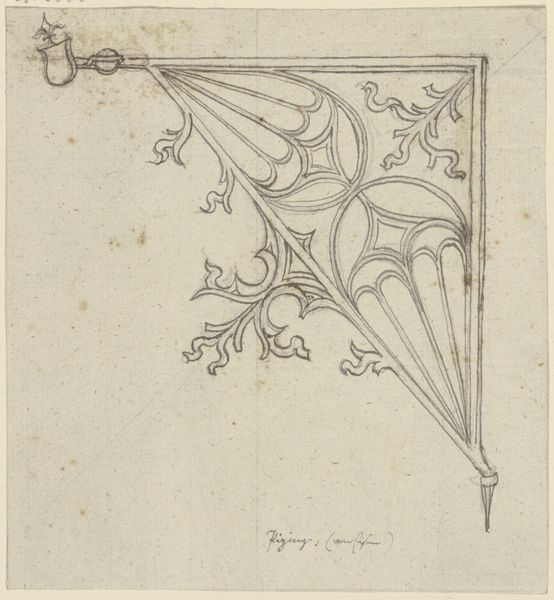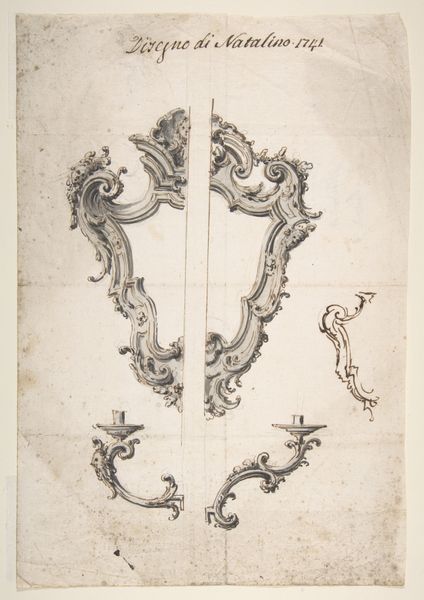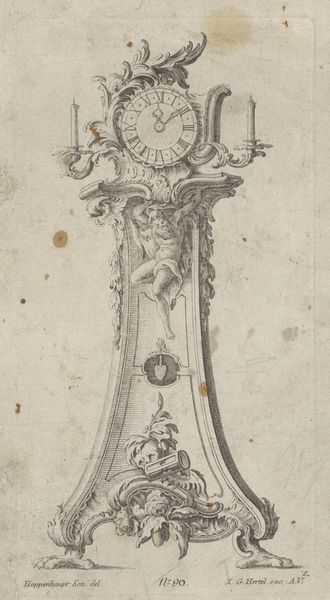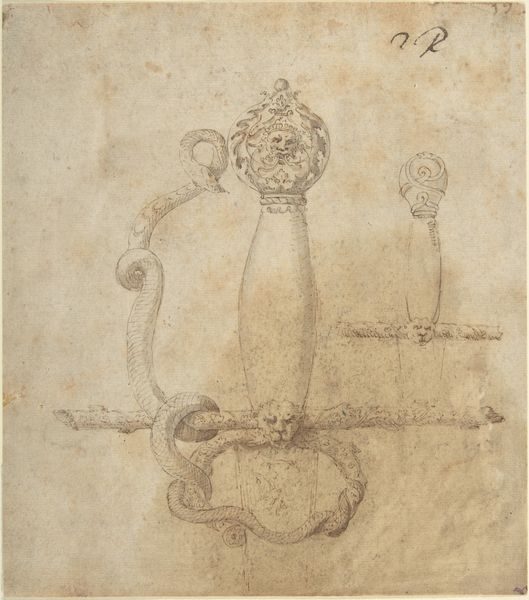
drawing, pencil
#
drawing
#
pencil sketch
#
form
#
11_renaissance
#
pencil
#
northern-renaissance
Dimensions: height 415 mm, width 287 mm
Copyright: Rijks Museum: Open Domain
Editor: This is Erasmus Hornick's "Three Designs for Pendant in the Shape of Small Pipes," dating back to around 1560-1570. It’s a pencil drawing, almost like an architect’s preliminary sketch. What catches your eye, what symbols jump out? Curator: My attention is immediately drawn to the prevalence of the allegorical figures and the way they are incorporated into these functional designs. Do you see how each pipe integrates classical imagery, turning everyday objects into potent symbols of status and learnedness? Editor: Yes, the figure in the middle drawing seems particularly significant. Curator: Precisely. The figure seems to be a representation of Diana, the huntress. But look closer, it is not just about mythology. The pipes become vehicles to carry deeper meanings, desires and anxieties about change within their specific social setting. Are the animals there by accident or is the hunt motif meaningful to these small "pipes"? Editor: That's interesting! They are not mere decorations, they tell stories...So this piece almost reveals the mindset of the upper classes during the Renaissance, or their attempt to connect with classical knowledge. Curator: Exactly! Notice also the emphasis on balance and ornamentation typical of Renaissance designs, how lines and curves play together. But do they express wealth and power or something more intimate and personal? What do you think? Editor: I see now how this drawing reveals not just artistic skill, but a whole cultural landscape embedded within these potential objects. I now see them less as "pipe designs", and more as symbolic carriers. Curator: Indeed. This is more than just design; it's cultural memory, cleverly disguised in everyday life. Editor: I am truly starting to appreciate how design, functionality and symbolism intertwine. Thanks for sharing your knowledge.
Comments
No comments
Be the first to comment and join the conversation on the ultimate creative platform.
